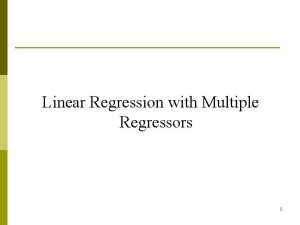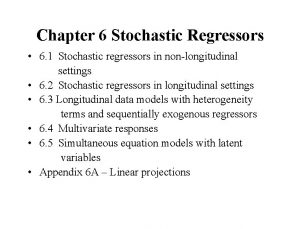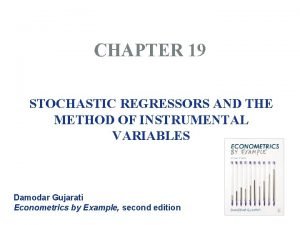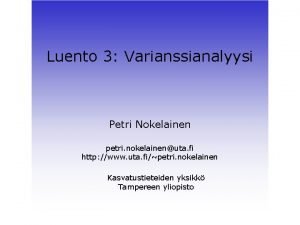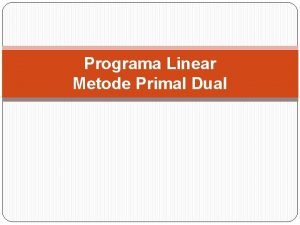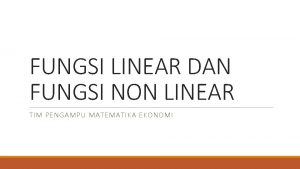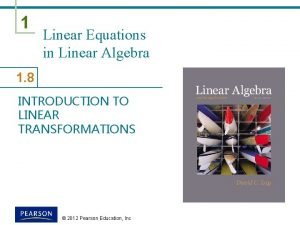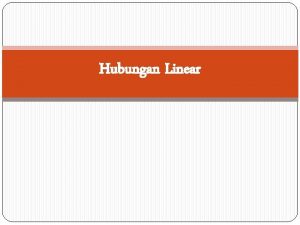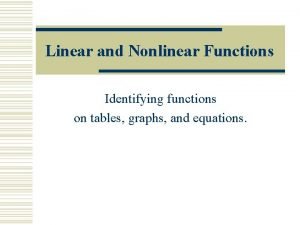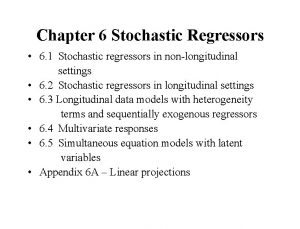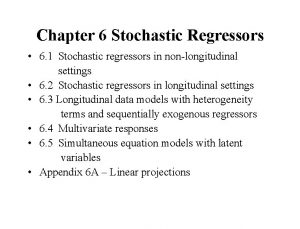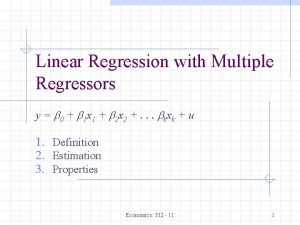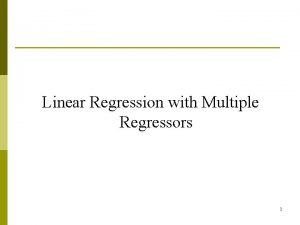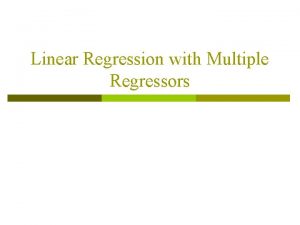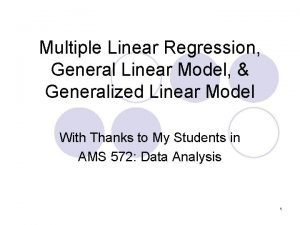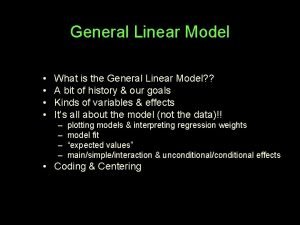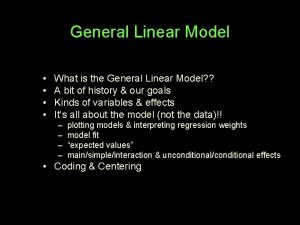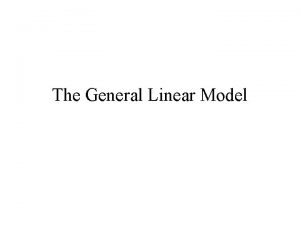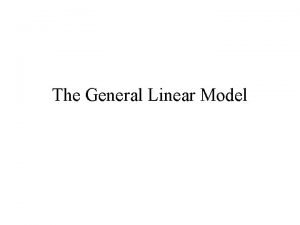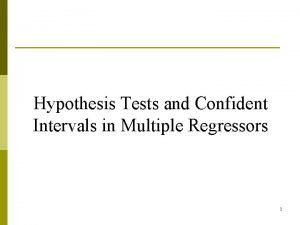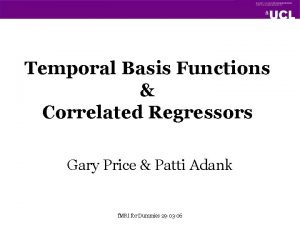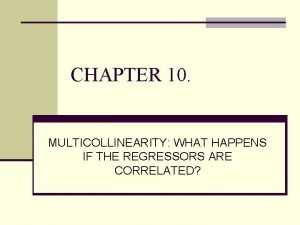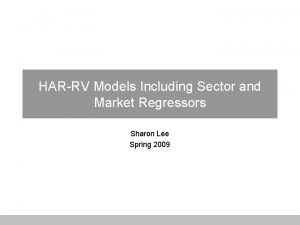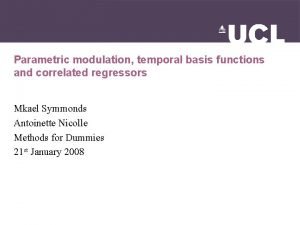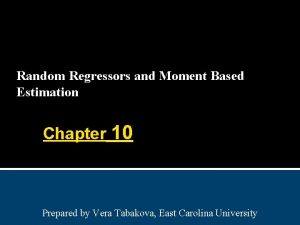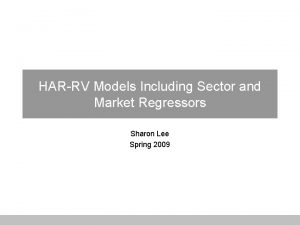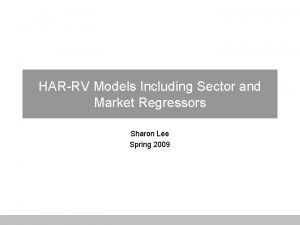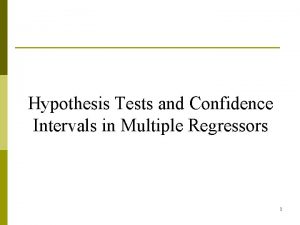General Linear Model General Linear Model regressors Y































- Slides: 31

General Linear Model

General Linear Model regressors Y 1 Y 2 X 11 … X 1 l … X 1 L X 21 … X 2 l … X 2 L β 1 β 2 ε 1 ε 2 . . . XJ 1 … XJl … XJL βL = YJ time points Y Observed data = + εJ time points regressors X Design Matrix * β Parameters + ε Residuals/Error

Design Matrix rest task 0 0 0 0 1 1 1 1 Conditions On Off On Use ‘dummy codes’ to label different levels of an experimental factor (eg. On = 1, Off = 0). time

Design Matrix 5 4 4 2 3 1 6 5 2 Covariates Parametric variation of a single variable (eg. Task difficulty = 1 -6) or measured values of a variable (eg. Movement).

Design Matrix 1 1 1 1. . . Constant Variable Models the baseline activity (eg. Always = 1)

Design Matrix Time Regressors The design matrix should include everything that might explain the data.

General Linear Model regressors Y 1 Y 2 X 11 … X 1 l … X 1 L X 21 … X 2 l … X 2 L β 1 β 2 ε 1 ε 2 . . . XJ 1 … XJl … XJL βL = YJ time points Y Observed data = + εJ time points regressors X Design Matrix * β Parameters + ε Residuals/Error

Error • Independent and identically distributed iid

Ordinary Least Squares 35 Residual sum of square: The sum of the square difference between actual value and fitted value. 30 25 20 e 15 10 5 0 0 5 10 15

Ordinary Least Squares 35 N åe t =1 30 2 t = minimum 25 20 15 e 10 5 0 0 -5 5 10 15

Ordinary Least Squares Y = Xβ+e e = Y-Xβ XTe=0 => XT(Y-Xβ)=0 => XTY-XTXβ=0 => XTXβ=XTY => β=(XTX)-1 XTY y Xβ x 1 β 1 x 2 β 2 e

f. MRI Y = Observed data X Design Matrix * β + ε Parameters Residuals/Error 12

Problems with the model

The Convolution Model Expected BOLD HRF Impulses =

Convolve stimulus function with a canonical hemodynamic response function (HRF): HRF Original Convolved HRF

Physiological Problems



Noise Low-frequency noise Solution: High pass filtering

discrete cosine transform (DCT) set blue black green red = data = mean + low-frequency drift = predicted response, taking into account low-frequency drift = predicted response, NOT taking into account low-frequency drift

Assumptions of GLM using OLS All About Error

Unbiasedness Expected value of beta = beta

Normality

Sphericity

Homoscedasticity

not


Independence

Autoregressive Model y = Xβ + e over time et = aet-1 + ε autocovariance function a should = 0

Thanks to… • Dr. Guillaume Flandin

References • http: //www. fil. ion. ucl. ac. uk/spm/doc/books/hbf 2/pdfs/Ch 7. pdf • http: //www. fil. ion. ucl. ac. uk/spm/course/slides 10 vancouver/02_General_Linear_Model. pdf • Previous Mf. D presentations
 What is a regressor in linear regression
What is a regressor in linear regression Stochastic regressors
Stochastic regressors Stochastic regressors
Stochastic regressors Minitab general linear model
Minitab general linear model General linear model
General linear model What is interactive communication model
What is interactive communication model Model primal dan model dual program linear
Model primal dan model dual program linear Planos en cinematografia
Planos en cinematografia Where did general lee surrender to general grant?
Where did general lee surrender to general grant? Simple linear regression and multiple linear regression
Simple linear regression and multiple linear regression Contoh soal metode biseksi
Contoh soal metode biseksi Linear text and non linear text
Linear text and non linear text Nonlinear
Nonlinear Contoh soal metode numerik dan penyelesaiannya
Contoh soal metode numerik dan penyelesaiannya Linear pipeline processors
Linear pipeline processors Hyperactive multimedia examples
Hyperactive multimedia examples How to convert right linear grammar to left linear grammar
How to convert right linear grammar to left linear grammar Perbedaan fungsi linier dan non linier
Perbedaan fungsi linier dan non linier Non linear function
Non linear function Linear independence of vectors
Linear independence of vectors Linear algebra linear transformation
Linear algebra linear transformation Cara penggal lereng
Cara penggal lereng Linear impulse and momentum
Linear impulse and momentum Simultaneous equations linear and non linear
Simultaneous equations linear and non linear Linear and nonlinear table
Linear and nonlinear table Nonlinear table
Nonlinear table Difference between linear and nonlinear analysis
Difference between linear and nonlinear analysis Linear and nonlinear editing
Linear and nonlinear editing Non linear simultaneous equations
Non linear simultaneous equations Right linear grammar
Right linear grammar O'que é um texto narrativo
O'que é um texto narrativo Multi nuclei zone model
Multi nuclei zone model
